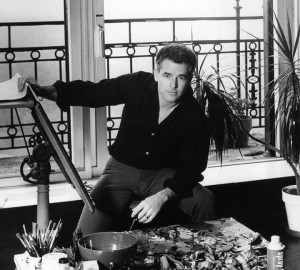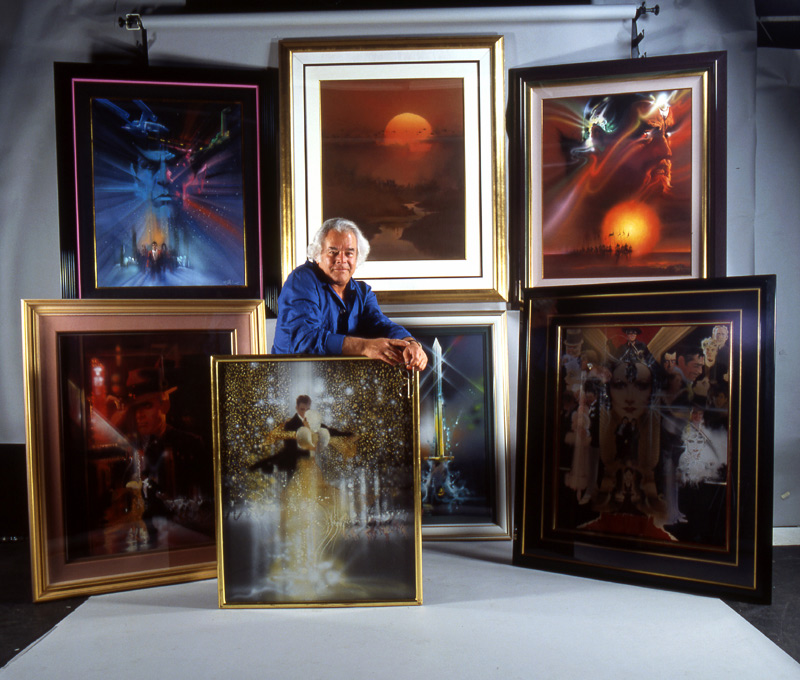View Art by – BOB PEAK

Bob Peak (American 1927-1992)
EDUCATION:
- Wichita State University
- Art Center College of Design
MILITARY: US Navy
HIGHLIGHTS:
Illustration legend Bob Peak changed the face of movie advertising. Dubbed “The Father of Modern Movie Posters”
- 20 covers for Time magazine
- 39 covers for TV Guide
- US Postal Service – 1984 Olympic stamps and “Olympic Golden Moments” book
- Over 40 movie posters
- Fashion magazine articles and advertising art Cosopolitan, Life, Redbook, Boys Life, Vouge…
- Awards
- Key Art Awards “Lifetime Achievement Award” in 1992 by the Hollywood Reporter for his contribution to the film industry.
- Society of Illustrators – Hall of Fame
- Society of Illustrators – Hamilton King Award
- Over 150 Gold medals and awards in all
- Magazine Articles
- American Artist
- Communication Arts
- Collections
- Smithsonian Institute
- Varese Sarabande Records / Robert Townson
- Johnny Cash Museum
- Frank Darabount (movie producer/dirictor/writer)
- The NIXDORF collection (James Bond 007 collection)
Available on SanguinFineArt Bob Peak artwork, editions, posters and notecards
WEBSITE: BobPeak.org

From the SOCIETY OF ILLUSTRATORS
There is an adage that an advertisement is only good if it sells. Hollywood, for example, is conscious of its need to attract the audience to the marquees first. Magazines, too, see this need to capture attention through their use of innovative artwork. Since the mid-1950’s, art directors have recognized that Bob Peak’s illustrations do these things. The list of his clients is extensive and reflects the versatility of his talent to bring eye-catching appeal to the product. With several techniques in his repertoire, each painstakingly perfected, he is always able to bring a fresh approach to a subject.
Born in Denver, Colorado in 1928, Bob spent his early years in Kansas and later earned an art degree form Wichita State University. After his military service, he also received a degree from the Art Center College of Design in Los Angeles. By this time his technical skill was evident and attracted a lucrative campaign from Old Hickory Whiskey. This was soon after his arrival in New York. The exposure, appearing weekly on the back covers of Life and Look, led to numerous assignments for Esquire, American, Cosmopolitan and other magazines. He continued to build a reputation in the advertising field with his illustrations for Puritan Sportswear, TWA, Coca-Cola, Owens-Illinois and Schaefer Beer.
In the 1960’s, Bob’s career flourished. The Artists Guild of New York named him “Artist of the Year” in 1961. This prestigious award, having originated the previous year, honors the top illustrators of the day. The Society of Illustrators Annual Exhibition has included Bob’s work in each of its shows since the first exhibition in 1959 and he has been a frequent award winner. A member of the Society since 1961, he received their Hamilton King Award in 1968.
With over forty movie posters to his credit since he illustrated his first, West Side Story, in 1960, Bob has earned a Gold Medal (Camelot, Illustrators 10) and an Award of Excellence (Mame, Illustrators 17). My Fair Lady, Rollerball, The Missouri Breaks, Islands in the Stream and The Spy Who Loved Me are some of the other films for which he has produced the poster art.
The Peaks lived in a spacious studio on New York’s Central Park South for several years before moving in 1963 to Greenwich, Connecticut. At first Bob worked in his personally designed studio there but later opened a studio in Westport. In 1976, the Illustrators Workshop was formed by Bob and fellow artists Alan E. Cober, Mark English, Bernie Fuchs, Bob Heindel and Fred Otnes. This unique study program offers intensive instruction sessions and seminars each summer.

Bob’s love of motion is easily seen in his art. He received an Award of Excellence (Illustrators ’64) for a piece in Sports Illustrated which depicted the speed and power of Pro Football and he has often incorporated sports action into his advertising and editorial work. His hobby, building classic sports cars, grew into a business venture in the early 1970’s, but was given less and less attention as it distracted him from his true vocation.

Walt Reed recently wrote in an article in North Light that: “Bob’s hallmark has always been his ability to innovate, to present an unusual, arresting and dramatic aspect of an idea.” His many exquisite techniques allow him the freedom to innovate. More than an artist of a singular style, he grows as he masters new perspectives and new dimensions. For Bob Peak has risen above the common preoccupation with style alone to concentrate on the artist’s real function which he states simply: “Can it Fly?” His successful career answers this question affirmatively.


